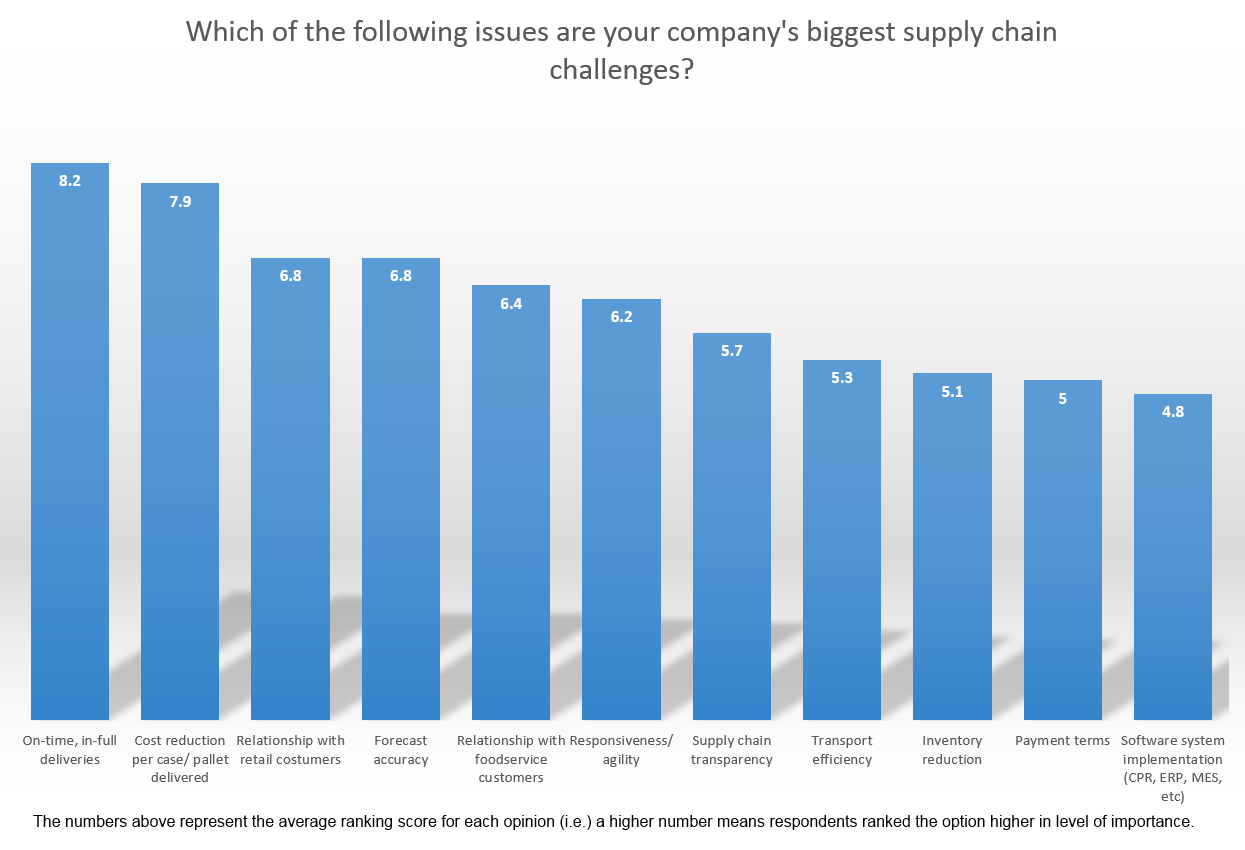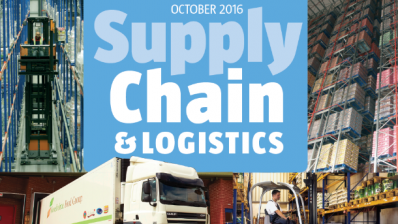Omnichannel trading: what it means for food manufacturers

- ‘Just too high’
- ‘The question being asked’
- Especially thorny problem
- ‘Cloud-based software-as-a-service’
As buzzwords go, ‘omnichannel’ is up there with the buzziest. But while service providers and consultants bandy the word around with conviction, smaller manufacturers and brand-owners may not think in these terms at all.
The theory is fairly clear. Multichannel trading involves retailers and the manufacturers that supply them offering consumers parallel sales channels, from traditional retail to online ordering (from home delivery to click-and-collect), across the range of routes to market.
Omnichannel takes this vision a step further. If multichannel trading is a reality (and in most retailer-led supply chains it is), then the prospect of higher sales is balanced by a responsibility to maximise consumer satisfaction across those various channels.
Indeed, beyond the short-term, increased sales will only come from integration and agility across those channels.
Consumer-facing information, as well as data in the supply chain, must be accurate and consistent across the board.
The reality is sometimes not as glossy as the brochure. At chocolate maker Montezuma’s, director Helen Pattinson uses the term ‘multichannel’, rather than ‘omnichannel’, to describe the business.
Montezuma’s is more ‘multi’ than most other brand-owners. When it was founded in 2000, the model was manufacturing-and-own-retail rather than combined manufacturing and third-party retail.
But the number of retail stores opened in the first half of the brand’s existence – six across the southeast – has stayed the same throughout the second.
“In 2008, when the recession hit, we stopped growth on the retail side,” says Pattinson. “We have an emotional attachment to our stores, but they come with a level of logistical problems that we could probably do without.”
‘Just too high’ (back to top)
She emphasises that the existing stores are “fine” and “pull their weight”, but adds: “The cost of opening new stores, and the risks involved, are just too high.”
The brand-owner also sells from its own website but, as with many brands, this was not designed primarily as a sales vehicle.
“If you’re going to the expense of hosting a website, it makes sense to sell from it, as well,” says Pattinson.
Turnover in 2015 was around £8M, she says, with Montezuma’s own retail accounting for some 30% of that figure. Trade sales, including third-party retail and distributors, chalked up 65% and the brand’s own online sales just 5%.
Its third-party retail network includes Ocado, Sainsbury, Waitrose, John Lewis and several independents. In many ways, says Pattinson, this is the easiest segment to supply and overall the most profitable.
“Our own online turnover is nothing like what we sell to retailers, but, bar-for-bar it is very profitable.”
That potential profit margin, even at relatively low volumes, is what interests many brand-owners in direct-to-consumer (D2C) sales.
At LCP Consulting, director Dr Julian Mosquera points out that it was previously considered unthinkable that ‘margin-light’ brands and retailers could follow an omnichannel strategy.
But while discounters such as Aldi have steered clear of the home delivery channel for mainstream groceries, it has opened up online sales of wine, he says.
‘The question being asked’ (back to top)
“And the question being asked in many businesses is: ‘If the retailers can disintermediate, why can’t the brands?’” said Mosquera
LCP is currently completing research with supply-chain partners to ascertain what the barriers are for brands when it comes to online and other D2C sales.
Some of those barriers are practical: the costs associated with temperature-controlled home delivery, for example, are much higher than for ambient.
As Mosquera says, any brand-owner will need to be sure that its supply-chain partners, including the fulfilment agent, can provide the level of omnichannel service required.
“Where home deliveries are involved, those agents need to reliably update both the consumer and their client, so that when the consumer contacts the brand-owner, they already know the answer to their question.”
He adds: “You need to think very carefully about what you’re asking your partner to do, how you cost it and what the margin is.”
While it may make sense for brand-owners to consider D2C options, says Mosquera, they need to understand that they can quickly become margin-erosive, and may simply be unaffordable.
But there are other potential barriers for brands taking a D2C route. As Mosquera puts it: “If you disenfranchise your retail model, what are the impacts?”
To phrase the question differently, if a brand-owner’s own direct sales to consumers become too successful, what are the risks of retailers either delisting its brands altogether or giving it a much less favourable deal in terms of shelf facings, promotions and so on?
Especially thorny problem (back to top)
This is an especially thorny problem for the bigger brand-owners, where options might include the development of specific D2C portfolios that do not compete directly with established retail.
Of course, while ‘omnichannel’ can refer to brand-owner or manufacturer routes to the consumer, the word is used more commonly in relation to retailers. But foodservice also has its ‘omnichannel’.
Havi, a logistics and packaging provider with its client base in foodservice, points out that pizza businesses offered multiple ways of buying products long before multichannel grocery retail took shape.
Today, the foodservice sector cannot compare with food retail in terms of scale or (usually) the sophistication of its planning and fulfilment systems.
But for many outlets and chains, the boom in online food delivery companies such as Deliveroo, Just Eat, Delivery Hero and UberEats has opened up an entire virtual marketplace.
Havi’s senior business development manager for the supply chain Reinhard Steup says that an omnichannel approach to foodservice can affect everything from the type of packaging required to demand for different products.
“If you go into a chain which works on a grab-and-go model, you can consume food there-and-then or take it to your home or office,” says Steup.
“But the same chain may offer home delivery, and the chain will be responsible for providing packaging which protects its own product, not least in terms of temperature.”
He points out that online and instore foodservice offerings will probably overlap but may not be identical. “That could require a channel-agnostic approach to analysing and planning, with a lot of interaction between the two channels,” he says.
‘Cloud-based software-as-a-service’ (back to top)
When it comes to systems, Steup explains: “If I were a startup, or had a couple of outlets, I might run things on my own using advanced, cloud-based software-as-a-service.”
Investing in marketing is essential, as is gathering data in order to derive insights and forecast future demand.
Complexity comes with scale, he says, and is to do with using multiple suppliers, but also responding to regional variations among consumers.
Smaller companies may be aware of what they will gain from planning and warehouse management software, but they may also be apprehensive about what they could lose.
Naturally enough, software suppliers paint a picture of chaos where these types of system are not in place. At warehouse management technology provider Indigo Software, solutions architect Eric Carter says: “The day-to-day trivia of controlling the order pool needs to be secured properly, and a full audit trail of the whole order to dispatch provided.
“It’s not good enough just to do a great job, these days; you need to be able to ‘prove’ it, too, and this is where many smaller food companies descend into potentially chaotic, paper-based pick and confirmation processes.”
But it would be wrong to suggest that the omnichannel potential of smaller food businesses is being obstructed by technophobia and the failure to invest in systems.
In fact, in rare cases, disintermediation has been taken to the point where the model is not omnichannel but pure D2C.
















